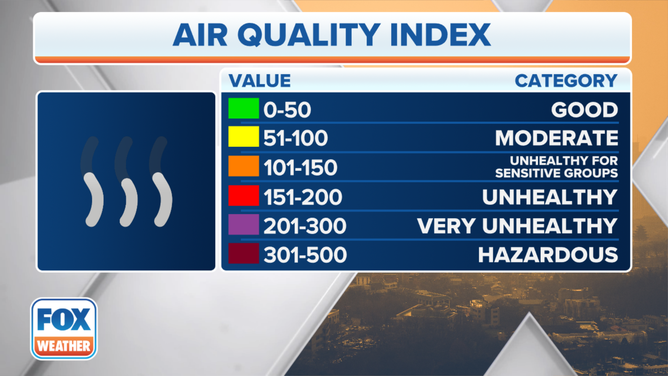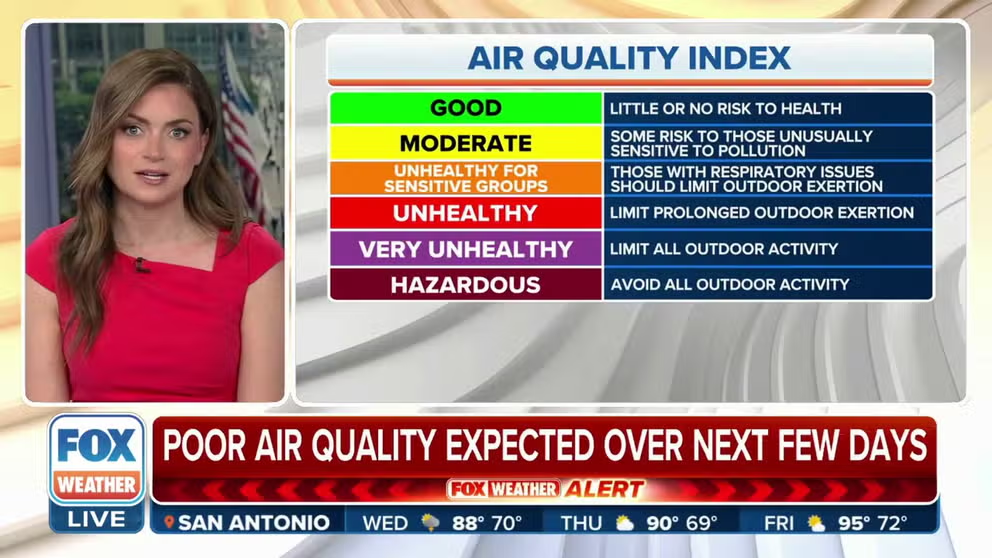What does code red, code purple air quality mean?
The Air Quality Index has six levels of concern each represented by a different color. Code Red, Purple and Maroon are the most serious.
What is the air quality index?
The air quality index (AQI) ranges from 0 to 500. It has six color-coded categories to correspond to a different set of health concerns that people should consider when being outside for extended periods of time. Here’s a closer look at each category and how you should react to each one.
When pollutants cause the air you breathe to become unhealthy or even hazardous, public officials may issue code red or purple alerts telling people to stay indoors based on the U.S. Air Quality Index.
The Environmental Protection Agency uses the Air Quality Index or AQI to rate the levels of pollutants in the air and notify the public if it becomes unhealthy.
The Air Quality Index has six levels of concern each represented by a different color. You might hear your public health officials reference the AQI by color or the level of concern. The AQI runs from 0 to 500 with each number corresponding to the concentration of pollutants in the air.

The Air Quality Index goes from green to magenta.
(FOX Weather)
Green is the lowest level of concern, meaning the air quality is good and the value of index is below 50.
Yellow is moderate and fine unless you are part of an unusually sensitive group with a health condition.
Orange represents "unhealthy for sensitive groups," with a value of 101 to 150. At Code Orange, older individuals, children and people with health conditions should remain indoors.
Red is "unhealthy" and could cause serious health issues to sensitive groups but also begin irritating the public. More than 100 million people in the Northern U.S. were under the code red "unhealthy" level due to wildfires in June burning in Canada.
Public health officials will issue an action day when the AQI is forecast to be unhealthy or a code red notifying the public to reduce exposure to air pollution.
Purple is "very unhealthy," with an index over 201, and at this point, everyone is at risk of the health effects associated with pollution.
New York City had the worst air quality in the world on June 6 due to the wildfires in Canada sending smoke down into New York. The event also marked the worst air quality in New York City since March 1985 – 38 years ago, according to the FOX Forecast Center.
Maroon is the most severe level of concern, with levels over 301 and considered a health emergency. This is the rarest level of the Air Quality Index.
